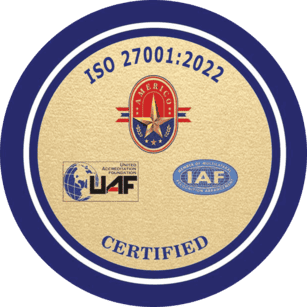Explore why video resumes are gaining popularity and how they can help you identify the perfect fit for your open roles.
What is a video resume, and why should recruiters incorporate them into hiring?

Did you know a single corporate job opening attracts roughly 250 applications, yet only 4 to 5 make it to the interview stage?
With so many applications flooding in, recruiters need something that stands out. And that’s where video resumes help.
These short videos are where candidates introduce themselves beyond traditional documentation, like cover letters and CVs.
Just like a normal resume, these clips usually cover the essentials, like:
- Education
- Work experience
- Interests
- Achievements
Typically, these videos range from 30 seconds to 2 minutes, making them an efficient tool for candidates to convey themselves and a quick assessment tactic for recruiters.
Also check out: Change your recruiting game with one-way video interviews
Top 4 advantages of video resumes
1. Helps differentiate between stand-out candidates
When companies request video resumes, they offer a refreshing break from the standard stack of traditional CVs, providing a clearer glimpse into the candidates’ personalities.
This new format catches your eye, often becoming the first thing you’ll likely check out. Most hiring managers would lean towards watching a video resume over flipping through pages of text.
It’s not just more engaging but also ensures that key details aren’t overlooked—a common risk with written resumes. So don’t hesitate to partner with experienced video marketing agencies when creating your video resumes to ensure they are impactful, engaging, and effectively highlight your key strengths.
2. Allows candidates to take control of their story
Resume videos put candidates in the driver’s seat, allowing them to tailor their narrative.
They can address potential interview questions head-on, showcasing their preparedness and understanding of the role.
It’s a proactive approach that demonstrates their insight and builds their confidence for the interview.
The best part is that candidates can get creative with sharing their video resumes, whether they use a codeless website builder or other video hosting services like Vimeo.
3. Adds a level of personalization to recruitment
Listing skills and experience on paper is one thing, but a video resume brings a candidate’s personality to the forefront.
This personal touch helps recruiters gauge company culture fit and communication skills much more effectively.
Plus, candidates can use this format to highlight specific talents or projects, offering a better view of their capabilities.
Video resumes also open the door for candidates to share more about themselves, including hobbies and life stories, providing a fuller picture of who they are beyond the job.
4. Puts the candidate’s creativity on display
Resumes in video formats are a golden opportunity for roles that demand creativity, like graphic design.
Candidates can present their work using design principles, effects, and sound, not just to tell but to show their skills.
In fact, traditional resumes can even be structured like a presentation, completed by a transcript for recruiters to follow along.
This can be done more efficiently with tools like a document generation system or an AI-assisted video editing suite.
Read more: How can recruiters assess candidates accurately?
4 reasons why video resumes may not work for recruiters

Video resumes are a great way for candidates to show off their personality and skills in a way that a traditional CV just can’t match.
But there are times when they might not be the best choice.
Let’s look at a few scenarios to see when and why a video resume might not be the best choice.
1. They could be considered informal
Traditional hiring methods remain the go-to for banking, financial services, or legal sectors. As a result, the written resume is still king for these roles, valued for its formality and professionalism.
Video resumes, on the other hand, might be seen as too casual for these environments.
If you’re hiring for these roles, it might be wise to specify that you want a traditional, written CV.
2. Not compatible with recruitment software
Not all recruitment tools are ready for the shift to video resumes.
Most recruitment agencies and hiring teams rely on applicant tracking systems designed to parse and analyze text-based resumes.
With 35% of businesses now adopting AI in some form, this technology often misses the nuances of video, potentially increasing the workload for hiring managers.
3. Poses the risk of potential hiring bias
One of the more serious concerns with video resumes is the potential for unconscious bias.
Unlike text-based CVs, which focus on skills and experience, video resumes put a face to the name.
Unfortunately, this can open the door to discrimination based on appearance, which has no place in ethical and fair hiring practices.
4. Not a one-size-fits-all solution
Video resumes aren’t the right choice for everyone.
Some candidates might feel uncomfortable on camera despite being the perfect fit for a role.
In this case, you don’t want to prevent them from showcasing their true capabilities, so a text resume and a face-to-face interview might be the best way to shine.
While resume videos offer a dynamic platform for candidates to express their creativity and personality, they’re not universally applicable.
Despite these challenges, video resumes are still a powerful tool in the proper contexts, especially for roles that value creativity and personality.
Remember: The key to effectively leveraging video resumes is to balance the benefits and drawbacks and understand if it suits the role you’re hiring for.



